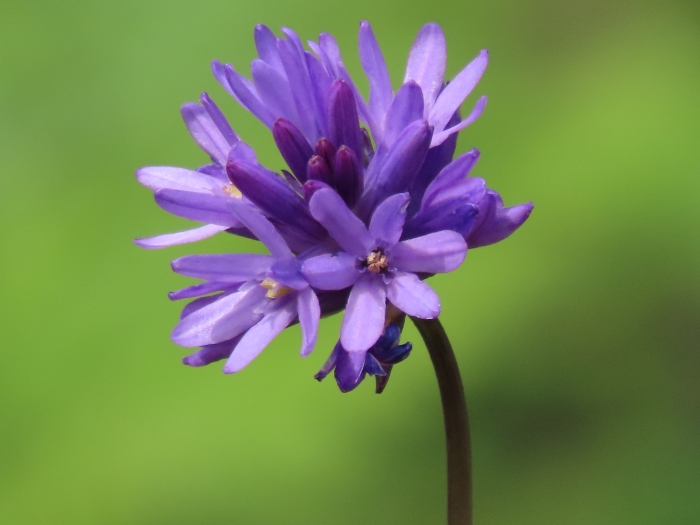Ookow
(Dichelostemma congestum)
Ookow (Dichelostemma congestum)
/
/

icosahedron
CC BY 4.0
Image By:
icosahedron
Recorded By:
Copyright:
CC BY 4.0
Copyright Notice:
Photo by: icosahedron | License Type: CC BY 4.0 | License URL: http://creativecommons.org/licenses/by/4.0/ | Rights Holder: icosahedron | Publisher: iNaturalist | Date Created: 2022-04-29T11:30:03-07:00 |
























Estimated Native Range
Summary
Dichelostemma congestum, commonly known as ookow or fork-toothed ookow, is a perennial herb native to the grasslands, open woodlands, and chaparral of California, Oregon, and Washington. This plant typically grows tall, thin, naked stems that can reach up to 60 centimeters in height, topped with dense, spherical inflorescences of bright purple flowers. Each flower is composed of six petal-like lobes and measures about a centimeter wide, blooming from late spring to early summer. The flowers are quite showy and attract pollinators such as bees and butterflies.
Ookow is valued for its striking floral display and is often used in wildflower gardens, native plant landscapes, and as a cut flower due to its long, straight stems. It thrives in full sun to part shade and prefers well-drained soils, tolerating a range of soil types from sandy to loamy. While it is drought-tolerant once established, moderate watering during the growing season can enhance flowering. Ookow is relatively low maintenance, but it can be susceptible to root rot if overwatered or planted in poorly drained soils. It is not commonly affected by serious pests or diseases.CC BY-SA 4.0
Ookow is valued for its striking floral display and is often used in wildflower gardens, native plant landscapes, and as a cut flower due to its long, straight stems. It thrives in full sun to part shade and prefers well-drained soils, tolerating a range of soil types from sandy to loamy. While it is drought-tolerant once established, moderate watering during the growing season can enhance flowering. Ookow is relatively low maintenance, but it can be susceptible to root rot if overwatered or planted in poorly drained soils. It is not commonly affected by serious pests or diseases.CC BY-SA 4.0
Plant Description
- Plant Type: Herb, Bulb
- Height: 2-3 feet
- Width: 3-4 feet
- Growth Rate: Moderate
- Flower Color: Blue, Purple
- Flowering Season: Spring, Summer
- Leaf Retention: Deciduous
Growth Requirements
- Sun: Full Sun, Part Shade
- Water: Low, Medium
- Drainage: Fast, Medium, Slow
Common Uses
Bee Garden, Butterfly Garden, Low Maintenance
Natural Habitat
Grasslands, open woodlands, and chaparral
Other Names
Common Names: Ookow, Dense-Flower Twine Lily
Scientific Names: , Dichelostemma congestum, Brodiaea congesta, Brodiaea pulchella, Dichelostemma pulchellum, Dipterostemon pulchellus, Hookera congesta, Hookera pulchella,
GBIF Accepted Name: